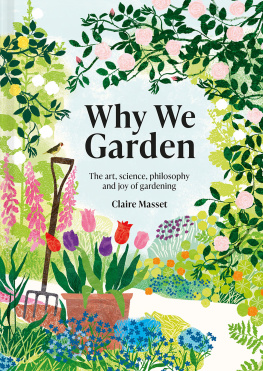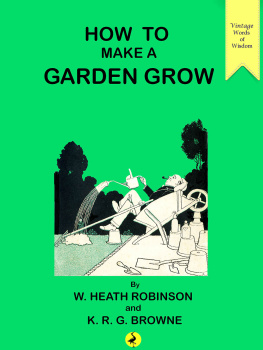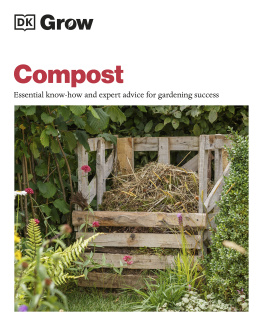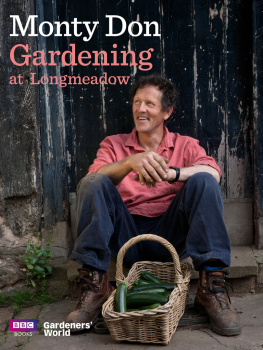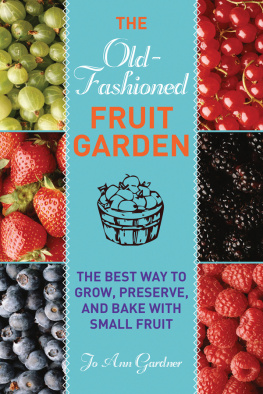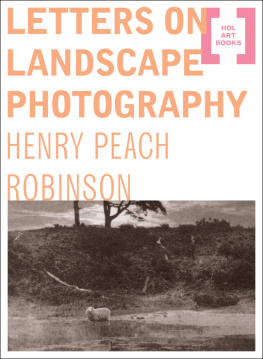William Robinson - The Wild Garden
Here you can read online William Robinson - The Wild Garden full text of the book (entire story) in english for free. Download pdf and epub, get meaning, cover and reviews about this ebook. year: 2009, publisher: Timber Press (OR), genre: Art. Description of the work, (preface) as well as reviews are available. Best literature library LitArk.com created for fans of good reading and offers a wide selection of genres:
Romance novel
Science fiction
Adventure
Detective
Science
History
Home and family
Prose
Art
Politics
Computer
Non-fiction
Religion
Business
Children
Humor
Choose a favorite category and find really read worthwhile books. Enjoy immersion in the world of imagination, feel the emotions of the characters or learn something new for yourself, make an fascinating discovery.

- Book:The Wild Garden
- Author:
- Publisher:Timber Press (OR)
- Genre:
- Year:2009
- Rating:3 / 5
- Favourites:Add to favourites
- Your mark:
- 60
- 1
- 2
- 3
- 4
- 5
The Wild Garden: summary, description and annotation
We offer to read an annotation, description, summary or preface (depends on what the author of the book "The Wild Garden" wrote himself). If you haven't found the necessary information about the book — write in the comments, we will try to find it.
The Wild Garden — read online for free the complete book (whole text) full work
Below is the text of the book, divided by pages. System saving the place of the last page read, allows you to conveniently read the book "The Wild Garden" online for free, without having to search again every time where you left off. Put a bookmark, and you can go to the page where you finished reading at any time.
Font size:
Interval:
Bookmark:
THE WILD GARDEN


EXPANDED EDITION
by
WILLIAM ROBINSON
with new chapters and photography by
RICK DARKE

Frontispiece: Mt. Cuba Center, Greenville, Delaware. This page: Eastern featherbells (Stenanthium gramineum) growing wild in a high meadow in the Smoky Mountains of North Carolina.
New chapters and photography
copyright 2009 by Rick Darke.
All rights reserved.
Published in 2009 by Timber Press, Inc.
The Haseltine Building
133 s.w. Second Avenue, Suite 450
Portland, Oregon 97204-3527
www.timberpress.com
2 The Quadrant
135 Salusbury Road
London NW6 6RJ
www.timberpress.co.uk
Printed in China
Designed by Susan Applegate
Library of Congress Cataloging-in-Publication Data
Robinson, W. (William), 18381935.
The wild garden / William Robinson; with new chapters and photography by Rick Darke.Expanded ed.
p. cm.
Expansion of: 5th ed. 1895.
Includes bibliographical references and index.
ISBN-13: 978-0-88192-955-3
1. Wild flower gardening. 2. Wild flower gardeningGreat Britain. 3. Wild flowersGreat Britain. 4. Exotic plantsGreat Britain. I. Darke, Rick. II. Title.
SB439.R615 2009
635.9676dc22 2009019448
A catalog record for this book is also available from the British Library.

to
William Robinson
and the
Expanded Edition of The Wild Garden

FAR LEFT The West Garden at Gravetye Manor in July 2005.
FIRST PUBLISHED IN 1870 and evolving through seven editions in William Robinsons lifetime (18381935), The Wild Garden promoted an authentically naturalistic and genuinely low-maintenance approach based upon Robinsons considerable experience as a gardener, a botanist, and a direct observer of diverse habitats. The book was ground-breaking and hugely influential in its day, and is stunningly relevant to twenty-first century gardeners and landscape stewards seeking to combine esthetic design with dynamic biological diversity and sustainable management practices.
Rich with humor and strong opinion, The Wild Gardens text is full of spirit and speaks of Robinsons enormous personal energy. A prolific writer and editor, the Irish-born Robinson made a successful career of telling the English how they might be more practical and imaginative gardenersno mean trick in any day. When The Wild Garden first appeared, the prevailing taste in British and European Continental garden design was for meticulously contrived displays of tropical annuals newly introduced from South America. Robinsons condemnation of this style as rote and wasteful was highly controversial and yet his vision of gardens based upon flowing arrangements of locally adapted winter-hardy plants eventually triumphed and has proved the most enduring.
Robinsons lifelong friend Gertrude Jekyll was strongly influenced by The Wild Garden, and her own garden at Munstead Wood and many of her designs for others heartily embraced approaches outlined in The Wild Garden. Robinsons philosophies benefited from being very much in sync with the increasingly popular British Arts and Crafts movements ethics linking beauty with utility and promoting an appreciation of local materials and patterns. Englands increasing industrialization was re-making much of the countryside and eliminating or modifying beyond recognition many of the semi-wild places previously taken for granted. Robinsons idea of conserving some of this wildness within gardens was well-reasoned and well-timed.
Though Robinson was just thirty-two when the first edition of The Wild Garden appeared, he brought to it a wealth of experience and knowledge. Robinsons professional career began in Ireland, as a gardener for the private estates Curraghmore House and, later, Ballykilcavan. He left Ireland for England in 1861 armed with a letter of introduction from David Moore, the director of Irelands National Botanic Garden in Glasnevin, Dublin, and secured a position with the Royal Botanic Societys garden in Regents Park, London. Robinson was responsible for the herbaceous plantings, which then included a small section of British wildflowers. Here he began developing his extensive field knowledge of the English flora, exploring the countryside to study plants in their habitats and to collect material for the garden. In 1863 he received support for a month-long tour of botanical gardens and nurseries in England, Scotland, and Ireland which considerably broadened his knowledge of the worlds flora in cultivation.
Robinsons career as a writer began in earnest that year with a long series of articles describing the tour, running until 1865 in The Gardeners Chronicle. His further touring, writing, and work for the Royal Botanic Society obviously made a fine impression among his peers: in 1866 he was elected as a Fellow of the Linnean Society, his nomination sponsored by Charles Darwin and many other preeminent British scientists and horticulturists. Later that year Robinson resigned his position at Regents Park to devote himself to further studies and to his ambitions as a writer and publisher.
Long visits to France beginning in 1867 resulted in Robinsons first two books; Gleanings from French Gardens (1868) and The Parks, Promenades and Gardens of Paris (1869). His 1868 travels were devoted to high mountain and alpine habitats in France, Switzerland, and Italy, and from these Robinson produced Alpine Flowers for English Gardens, published in 1870, the same year as Mushroom Culture and The Wild Garden.
Robinson also sailed to North America in August 1870, traveling by train across the continent and back just a year after the First Transcontinental Railroad was completed. He returned to England in December, and although this was too late to provide material for the first edition of The Wild Garden, his observations of diverse North American natural habitats and the connections he made with leading botanists deeply informed his subsequent writing and books, including the fifth edition of The Wild Garden. In New England Robinson met Harvards Asa Gray, who was then the leading expert on the North American flora. In New York he visited Central Park, just then nearing completion, with its superintendent and principal designer Frederick Law Olmsted. Robinson got his first glimpse of the desert on his way to California, where he explored the high Sierras with the assistance of Californias great botanists Albert Kellogg and Henry Bolander.
In 1871 Robinson launched his weekly journal, The Garden, and served as its editor for twenty-nine years. Devoted to a wide array of garden and landscape subjects, The Garden drew from Robinsons extraordinary connections and included contributions from many of the periods most knowledgeable, progressive thinkers and doers. He began using engravings done from original works of accomplished artists to illustrate The Garden, a practice he eventually introduced to his books. The second edition (1881) of The
Next pageFont size:
Interval:
Bookmark:
Similar books «The Wild Garden»
Look at similar books to The Wild Garden. We have selected literature similar in name and meaning in the hope of providing readers with more options to find new, interesting, not yet read works.
Discussion, reviews of the book The Wild Garden and just readers' own opinions. Leave your comments, write what you think about the work, its meaning or the main characters. Specify what exactly you liked and what you didn't like, and why you think so.

